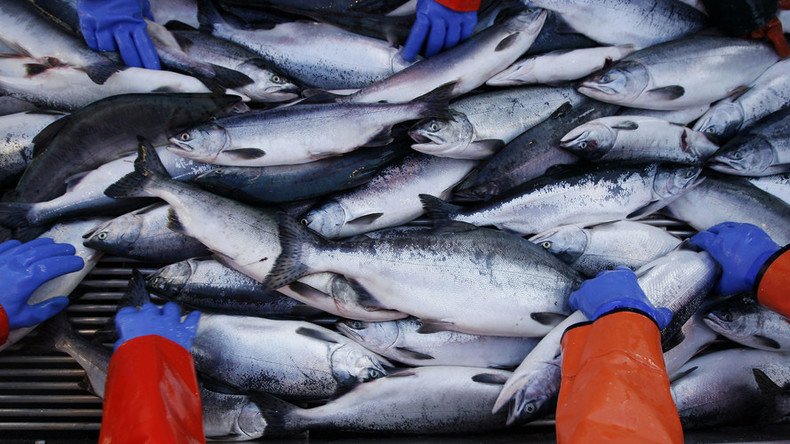FDA’s approval of GMO salmon: What are the environmental risks?

The FDA has not paid attention to possible negative environmental impact, if genetically modified salmon are released in the wild, Brettny Hardy, Earthjustice told RT’s Anya Parampil.
A coalition of environmental, fishing and consumer groups have filed a suit against the US Food and Drug Administration over its approval of genetically engineered salmon. It is the first such animal to be sold for commercial consumption.
Brettny Hardy is one of the lawyers filing the suit.
RT: What is your goal in filing this suit? What is remarkable, the FDA does not even require the salmon to be labeled, correct?
Brettny Hardy: That is true. I think one of the most important things to keep in mind is that this is the first time any country has ever approved a genetically engineered animal for food. So it is really important that the environmental analysis is complete and comprehensive. In this case, the Food and Drug Administration doesn’t really have expertise on the environmental aspects of what happens if genetically engineered salmon are released in the ecosystem. They didn’t do a comprehensive enough job in looking at those questions, and didn’t consult with agencies that do have that expertise - the wildlife agencies. As you mentioned, another issue is that the FDA is allowing the labeling to be voluntary, rather than requiring mandatory labeling.
RT: Who is producing the salmon and what is their case for genetically modifying fish?
BH: The Company that is producing the fish is called AquaBounty Technologies. They claim the fish [are] going to grow twice as fast as the wild Atlantic salmon. They are hoping to help address overfishing and food issues. But the problem is the way that they are producing this salmon now – they are going to be making the eggs in Prince Edward Island, Canada, flying the eggs to Panama to be raised and then shipping them back to the US. So their economic model really doesn’t allow for mass production, unless they start raising these fish in the US, which risks even more environmental concerns. If these fish were to be released into the environment, the problem is that in the lower 48 states here we have wild salmon that are critically endangered and impacted by a lot of threats. These genetically engineered fish would outcompete the wild Atlantic salmon that we know for food or potentially interbreed with them.
RT: You’ve mentioned that the Food and Drug Administration didn’t necessarily evaluate the impact that the production of such ‘Frankenfish’ could have on the environment. Did they do anything to see whether or not it would even be safe for humans to consume this salmon? Did they do any testing on that?
BH: There are some questions about whether the food safety issues were analyzed enough, but the lawsuit that we are bringing focuses on the environmental risks that the fish present, and the authority of the FDA to approve these fish.
The statements, views and opinions expressed in this column are solely those of the author and do not necessarily represent those of RT.













